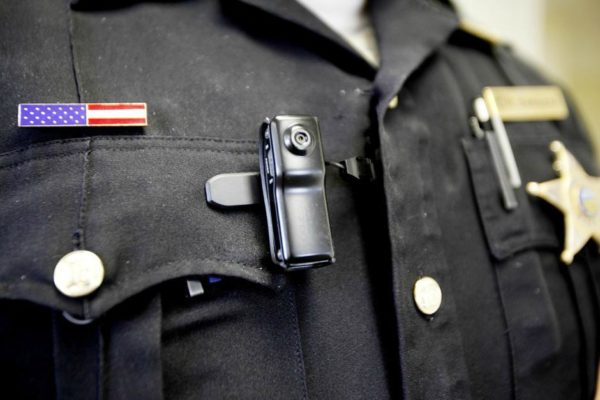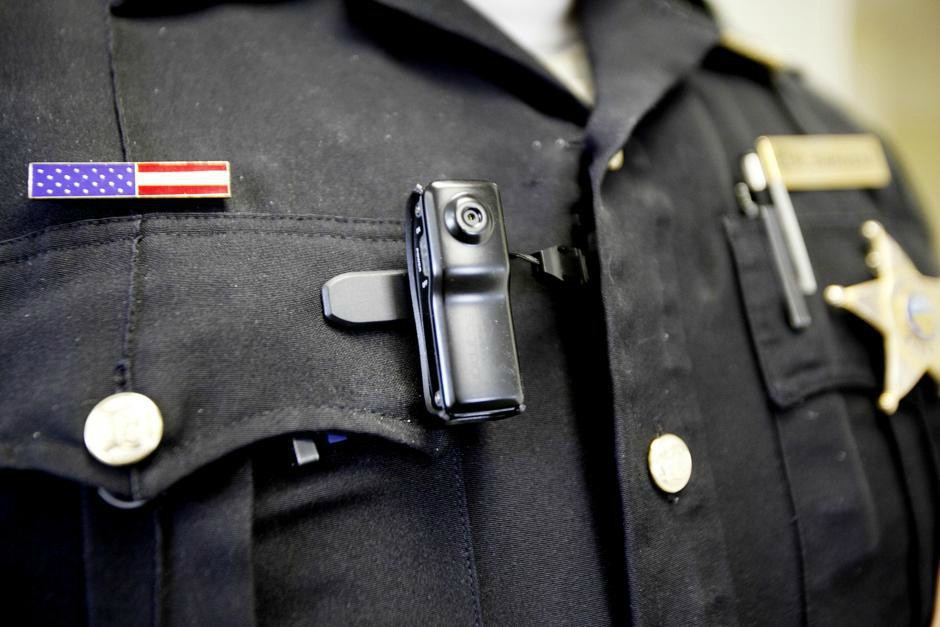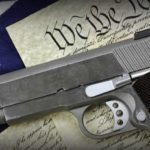
Image source: WYPR
On March 18, 2018, Sacramento police officers confronted Stephon Clark, leading to yet another fatal conclusion [1]. The two officers chased the unarmed 22-year old into his grandmother’s backyard and unleashed a deadly barrage, firing twenty shots and hitting Clark eight times. Unfortunately, this is but one of several deadly police interactions with black men that have led to political upheaval in recent years. Many have taken to the streets advocating reform for law enforcement training procedures and racial equality in the criminal justice system.
As with most political conflicts in the United States, opinions are split along party lines. After a slew of high profile police shootings of unarmed African-American men from Oscar Grant to Philando Castile, there began to be some proactive intervention with federal funding for body cameras. Additionally, the Department of Justice has done in-depth investigations on multiple police departments reviewing of years of data including but not limited to: police reports, officer testimony, internal affairs records, and disciplinary records. The Trump administration has made its unfettered support of law enforcement very conspicuous; with Attorney General Sessions encouraging an aggressive approach by law enforcement to disincentivize crime, acrimony over the issue will persist.
Members of law enforcement and their supporters frequently argue that peace officers have the right to take whatever measures they deem necessary to ensure their safety. Many supporters of victims and victims’ families believe that law enforcement officers frequently overreact, especially when having to confront African-American males. Racial bias has been well documented through the acquisition of data and thorough study at the university level. But many of these deadly encounters also occur during the course of or with high suspicion of criminal activity, making it difficult to prosecute police officers suspected of acting maliciously. The vendetta here is between police empowerment v. police accountability.
Police empowerment supporters believe:
Officers act within their rights
Clark, and other similar victims, was a suspect resisting arrest
Victims frequently provoke officers by not following instructions
Police shootings are legal and deaths are unfortunate outcomes
Police accountability supports assert:
Officers use excessive force
Officers rarely face legal consequences
Minority communities pay for police fear
Clark’s shooting and others should be classified as homicides
In Clark’s case, local police were on the lookout for an individual that had been breaking into people’s cars throughout the neighborhood. They were informed that the individual in question was an African-American male, six feet and one inch tall. A helicopter located Clark and relayed his position to patrolling officers; once the officers acquired his position a chase ensued. According to official reports, officers then say he extended an object perceived as a firearm in front of his body (which was discovered to be a cellular phone).
The autopsy deduced that out of the eight times Clark was struck, six shots were in his back. Pathology experts concluded that he was not facing the officers as they began to fire on him [2]; he was struck in his side which spun him until he was facing directly opposite the officers to receive the subsequent shots. Dr. Bennet Omalu who conducted the independent autopsy also determined that one of the bullets struck him when he was already on the ground or during his fall [3]. Furthermore, it was also determined that it took Clark around ten minutes to finally succumb to wounds he sustained during the confrontation; officers seemingly failed to render medical aid in a timely manner [4].
Officers are typically trained to utilize their firearms as a method of last resort to resolve a conflict; only when their lives are in imminent danger are they supposed to discharge their weapons. The evidence from the scene appears to run counter to the notion that the officers were in any immediate danger, but the investigation is steadily unfolding. In situations such as this officers have rarely faced convictions or any severe ramifications other than losing their positions as officers (and many who lose their jobs are re-hired by other police departments). Despite the policy efforts by different administrations, law enforcement has broad authority to apply force at the discretion of the individual officer involved in a matter. Given the high stress of being an officer and their occupation, juries (if the cases make it that far) usually side with the officer. It is incredibly difficult to formally legislate these matters without reducing the effectiveness of police officers.
By virtue of their position, it is part of a police officer’s job to discriminate. They have to be able to decide at a moment’s notice who is friend and who is foe. Notwithstanding the difficulty of their occupation, law enforcement employees have a responsibility to first and foremost protect the public interest and acknowledge that all parties are to be considered innocent until proven guilty in a court of law.
Preventing occurrences like this would require much more than a simple protocol reform or “sensitivity/diversity training”; but in the short term, there are three small steps that can be taken to increase accountability. First, police officers should not have operational control of their own body cameras to be able to mute them or disengage recording functions. They should begin recording when their shifts begin and cease when they come to an end all controlled from an independent source. Second, commissions that are independent of law enforcement internal affairs should be appointed to examine such incidents. The impetus behind this is the same as the appointment of independent commissions to create district maps. And lastly military style “rules of engagement” should be instituted; “do not fire unless fired upon” is the most prolific adage. These three steps are not guarantees. They cannot assuage the public anguish and tumult that has been aroused, but they are a step in a more productive direction for both law enforcement and the people they protect.
Take Action:
https://petitions.moveon.org/sign/require-police-nationwide- Do you believe all police officers should wear body cameras? Sign on here.
https://www.change.org/p/news-outlets-show-the-good-side-of-police?source_location=topic_page- Show your support for law enforcement here
https://www.cityofsacramento.org/Police/Join-SPD/Academies/Police-Academy- Examine the training protocols of the Sacramento Police Department
https://www.washingtonpost.com/graphics/2018/national/police-shootings-2018/?utm_term=.89a77d32d514- Review this year’s statistics of law enforcement related shootings
References
- “The Shooting of Stephon Clark”, Wikpedia, accessed April 1, 2018. https://en.wikipedia.org/wiki/Shooting_of_Stephon_Clark
- “Stephon Clark shot six times in the back-eight times in all- private autopsy says”, The Sacramento Bee, accessed April 1, 2018. http://www.sacbee.com/latest-news/article207439864.html
- “Stephon Clark shot 8 times, mostly in back, independent autopsy finds”, USA Today, accessed April 1, 2018. https://www.usatoday.com/story/news/nation/2018/03/30/stephon-clark-independent-autopsy-results-announced-friday/472507002/
- “Stephon Clark was facing away from police when they shot him, lawyer says”, The Guardian, accessed April 1, 2018. https://www.theguardian.com/us-news/2018/mar/30/stephon-clark-shooting-death-police-autopsy-latest




